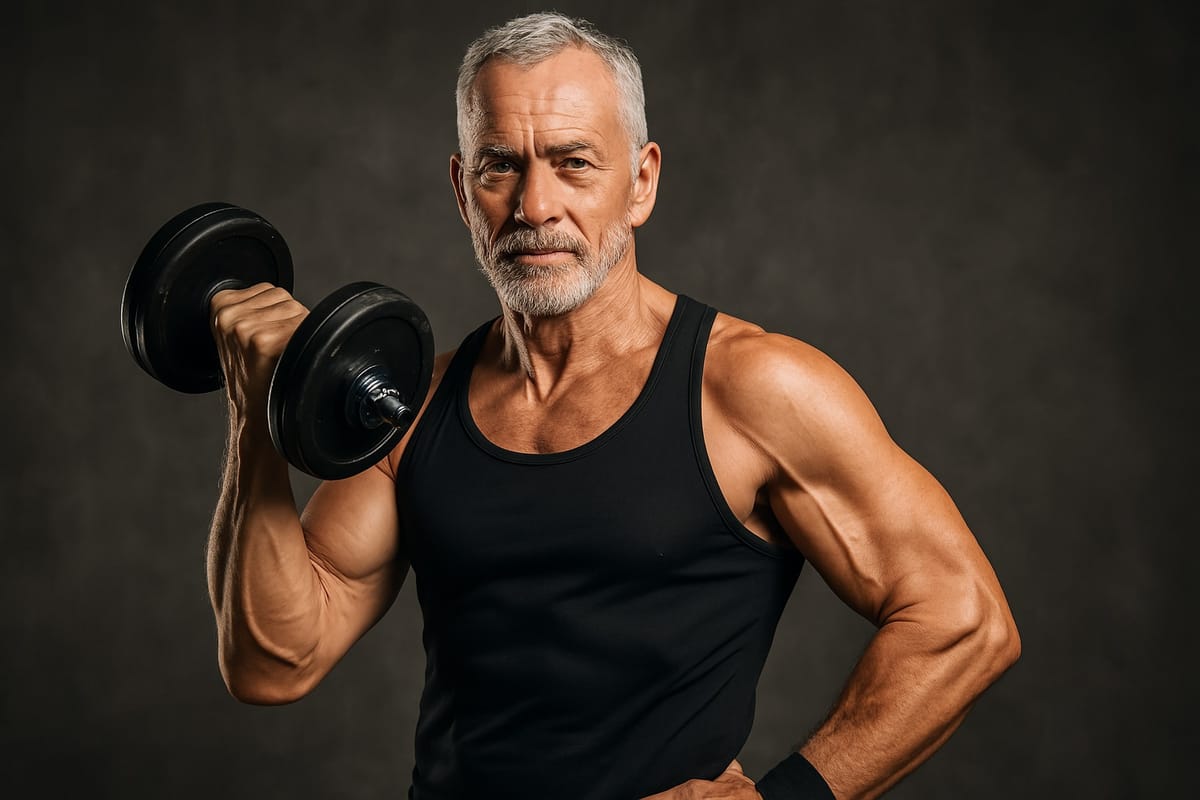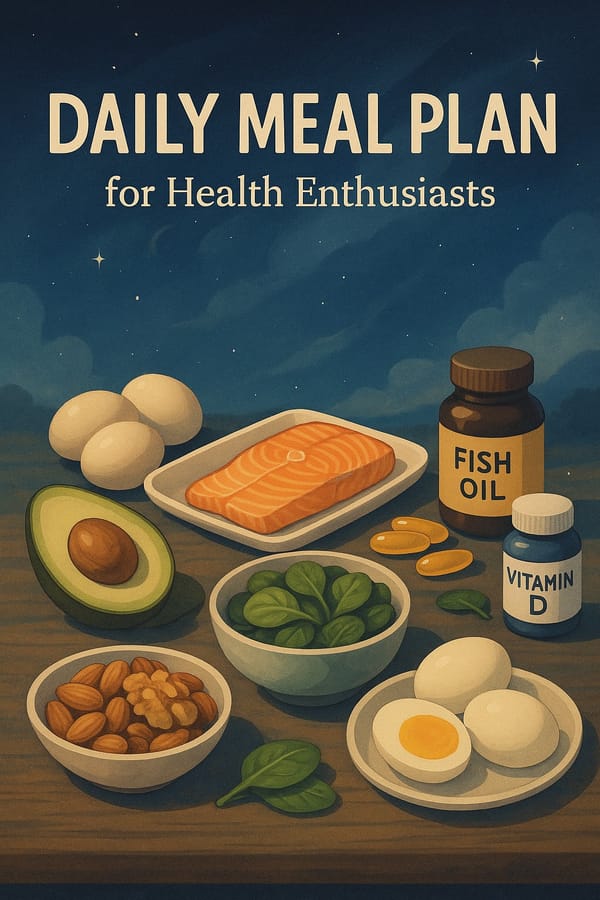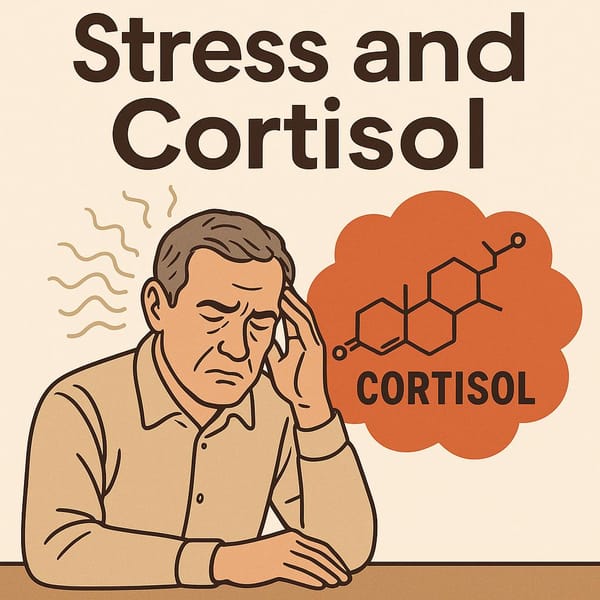Muscle Building for the 50+ Age Group: Key Techniques to Halt Muscle Loss and Achieve Your Dream Physique
Discover essential techniques for individuals aged 50+ to build muscle, minimize muscle loss, and incorporate exercise, nutrition, and health strategies that support a strong, lasting physique.

Introduction
Once you enter your 50s, various changes in your body can make staying healthy and achieving your dream physique more challenging. Chief among these is the decline in muscle mass (sarcopenia), which naturally occurs as you age. However, proper nutrition, exercise, and rest can effectively slow or even reverse muscle loss. This article will guide you through the most important techniques for individuals aged 50+ who aim to build strong, well-defined muscles and maintain lifelong health.
Understanding Muscle Loss in Your 50s
- Causes of Muscle Loss
As you grow older, your body produces less testosterone and growth hormone, key components in building and maintaining muscle mass. A sedentary lifestyle and an imbalanced diet also contribute to further muscle loss. - Why Strong Muscles Matter
For people over 50, having strong muscles is extremely important, as it reduces the risk of injuries like falls, hip fractures, or brittle bones. Additionally, it boosts your metabolism to support easier weight management and overall health. - Signs That Muscle Mass Is Declining
- Feeling easily fatigued during daily activities
- Reduced lifting strength
- Stable body weight but changing composition (less muscle, more fat)
- Increased tiredness or soreness compared to the past
Technique 1: Proper Nutrition for Those Over 50
One of the most crucial factors for effective muscle building is to consume adequate and balanced nutrients, particularly for people in their 50s. This involves focusing on both macronutrients and micronutrients.
- Protein
- Sources of High-Quality Protein: Lean meats, fish, egg whites, dairy, beans, and whole grains
- Recommended Intake: About 1.2–1.6 g of protein per kg of body weight per day (based on the International Society of Sports Nutrition)
- Distribution: Spread out protein intake throughout the day for more efficient absorption
- Carbohydrates
- Choose Complex Carbs: Brown rice, oats, whole wheat bread
- Avoid: High-sugar foods or sweets
- Eat Various Fruits and Vegetables to increase fiber and vitamin intake
- Fats
- Include Healthy Fats: Avocado, nuts, olive oil, and fatty fish like salmon
- Limit: Saturated and trans fats
- Vitamins and Minerals
- Vitamin D and Calcium: Crucial for bone strength, with research suggesting vitamin D also aids muscle growth
- B Vitamins and Iron: Support red blood cell production and energy metabolism
- Meal Planning
- Split meals into 4–5 smaller servings daily to help stabilize blood sugar and continuously support muscle growth
- Each meal should include a source of protein and fruits or vegetables to optimize nutrient absorption
- Cut/Diet Phase: ~40% protein, 30–35% carbs, 25–30% fat
- Bulk/Muscle Gain Phase: 40–50% carbs, 25–30% protein, 20–30% fat
Technique 2: Resistance Training
Resistance training is key to stimulating muscle growth at any age, but especially for those over 50, it must be approached with the right plan.
- Diverse Equipment Selection
- Dumbbells/Barbells: Ideal for those looking to build deeper muscle mass
- Machines: Provide safety and support for thorough muscle activation
- Resistance Bands: Excellent for beginners or people with joint concerns
- Suggested Workout Programs
- Full Body Workout: Focus on major muscle groups—chest, back, shoulders, legs, arms, and core—in a single session, suitable for those seeking convenience or just starting out
- Upper/Lower Split: Separate training days for upper and lower body, allowing more detailed muscle building and better recovery
- Reps and Sets
- Start with 8–12 repetitions per set for around 2–3 sets per exercise
- Gradually increase weight or alter reps based on your improving strength
- Aim for rest intervals of 60–90 seconds between sets to prevent injury and maintain efficiency
- Essential Exercises
- Squats: Strengthen the legs and hips
- Push-Ups: Target chest and shoulder muscles
- Pull-Ups/Lat Pull-Down: Develop back and arm strength
- Shoulder Press: Focuses on shoulder development
- Biceps Curls: Strengthen the front of the arms
- Triceps Extensions: Target the back of the arms
Technique 3: Cardiovascular (Cardio) Training
Although building muscle might be your main goal, cardio exercise plays an important role in overall health for those over 50. It enhances heart health, burns excess fat, and highlights the muscles you work so hard to build.
- Choosing the Right Cardio
- Brisk Walking/Elliptical: Minimizes joint impact
- Swimming/Water Aerobics: Particularly helpful for people with knee or hip issues
- Cycling: Strengthens the legs without excessive impact
- Intensity and Duration
- Begin with moderate-intensity cardio for 20–30 minutes, 3–4 days a week
- Increase intensity or duration gradually as your endurance improves
- Combining Cardio with Weight Training
- Alternate cardio days with weight training, or do cardio after lifting if they occur on the same day
Technique 4: Rest and Recovery
Rest and recovery are critical for muscle repair and growth. Without adequate downtime, muscle protein synthesis and overall progress are limited.
- Sleep
- Aim for 7–8 hours of sleep per night
- Enhance sleep quality by minimizing light and noise
- Adequate sleep helps maximize growth hormone release, essential for tissue repair
- Stretching and Massage
- Dedicate 5–10 minutes post-workout to stretching, alleviating muscle tension
- Consider foam rolling or massage to boost circulation and reduce stiffness
- Rest Days
- Plan for 1–2 rest days a week, letting muscles properly recover
- If you experience excessive soreness or fatigue, either add more rest days or reduce workout intensity
Technique 5: Wisely Using Herbs and Supplements
Some over-50 individuals look into herbal or supplemental options for quicker muscle gains, but it’s important to exercise caution and consult medical experts.
- Whey Protein
- A quick-absorbing protein source, ideal right after workouts
- Helps rapidly repair and rebuild muscle fibers
- Casein Protein
- Slower absorption rate compared to whey, providing extended protein release
- Ideal before bed to maintain steady protein availability
- Creatine
- Multiple studies link creatine to enhanced strength and muscle gains
- Consult a doctor first, especially for those with kidney-related issues
- Vitamin D
- Critical for calcium absorption and muscle function
- Check vitamin D levels prior to supplementation
- Omega-3 Fatty Acids
- Minimizes inflammation in muscles and joints
- Found in fatty fish, flaxseeds, or omega-3 supplements
Technique 6: Planning and Tracking Results
- Set Reasonable Goals
- Create both short-term and long-term objectives as motivation
- Focus can include building muscle in specific areas or maintaining certain body weight/fat percentages
- Record Workouts and Meals
- Keep track of weights, reps/sets, and daily food consumption to ensure consistency
- Managing dietary intake helps sustain quality protein levels
- Consistent Assessments
- Weigh in, measure arms/waist/legs, or use body fat metrics
- Take periodic photos to visualize body changes
Technique 7: Adjusting for Health and Personal Limits
In your 50s, addressing health issues like knee pain, shoulder problems, or chronic conditions is critical. That said, you can adapt your workouts and nutrition accordingly.
- Consult Health Professionals
- Get a checkup before starting new workout plans or supplements
- Seek physical therapists or nutritionists if you have unique health concerns
- Prioritize Safety
- Begin with lighter weights or simpler movements, then progressively increase intensity
- Steer clear of potentially high-risk or overly heavy exercises, like very heavy deadlifts or deep squats
- Listen to Your Body
- If you experience unusual pain, take a break and consult a professional
- Adjust exercises as needed if they feel unsuitable for your current capability
Technique 8: Boosting Motivation and Consistency
- Find Role Models
- Follow individuals who have successfully built muscle past the age of 50
- Read relevant articles or books for inspiration
- Engage with online communities sharing similar goals
- Join Fitness Communities
- Try group workouts or join a gym class
- Exchange expertise with peers who prioritize health in this age group
- Reward Yourself
- Celebrate milestones (e.g., completing a weekly workout schedule) with small incentives
- Reinforce positive habits to maintain enthusiasm
Conclusion
Building and maintaining muscle over 50 is entirely feasible with the right approach, which includes proper nutrition, combined resistance and cardio training, sufficient rest, and ongoing monitoring. Don’t forget to adapt your program based on any health restrictions and continually motivate yourself to achieve a fit, strong physique. Managing factors like stress, smoking, or excessive alcohol intake also plays a vital role in preserving health and energy levels.
Disclaimer
This article provides general information on health and muscle-building, not medical advice. If you have underlying conditions or health concerns, consult a physician or nutritionist before starting any program or changing your lifestyle.
Believe in your potential to transform your body, regardless of age, by maintaining discipline, understanding the correct methods, and setting clear goals.



